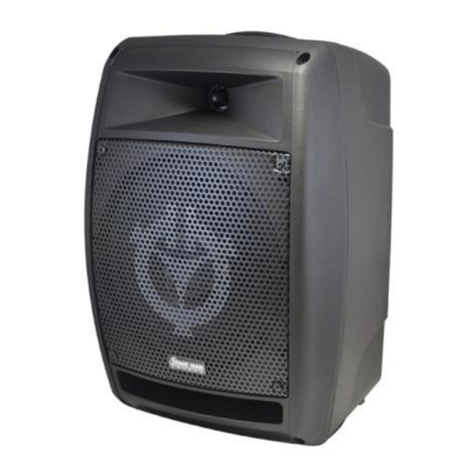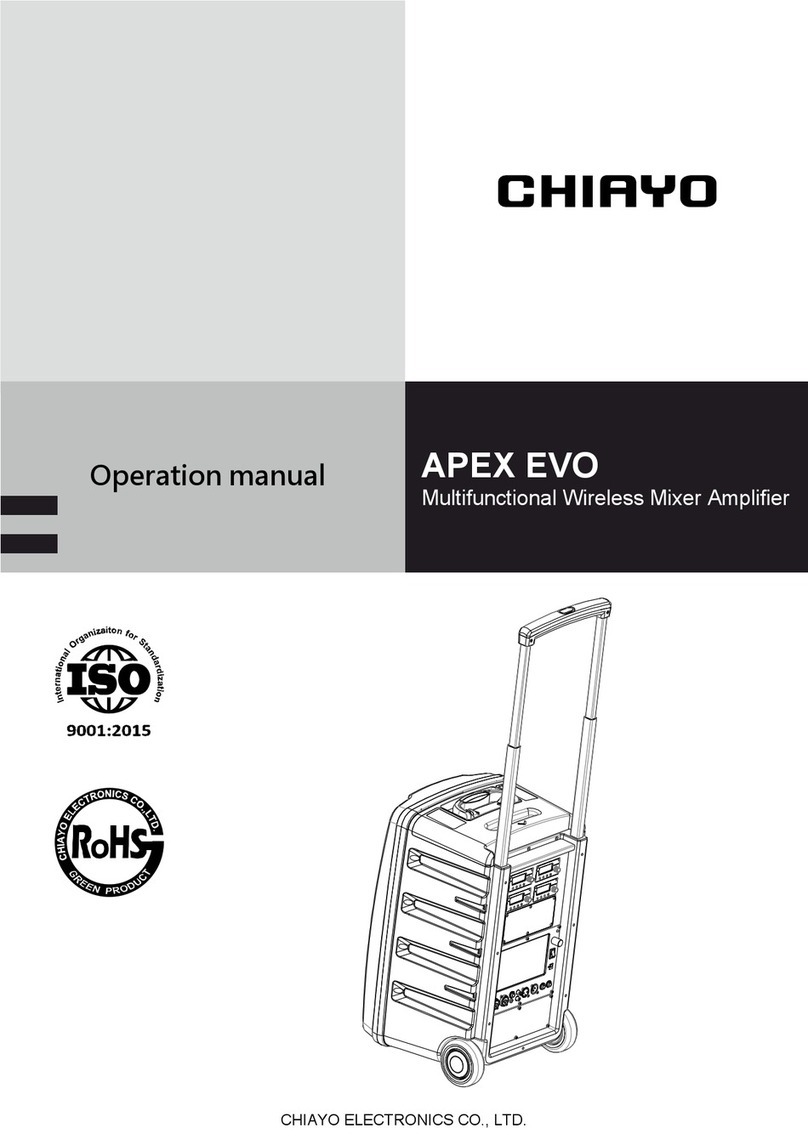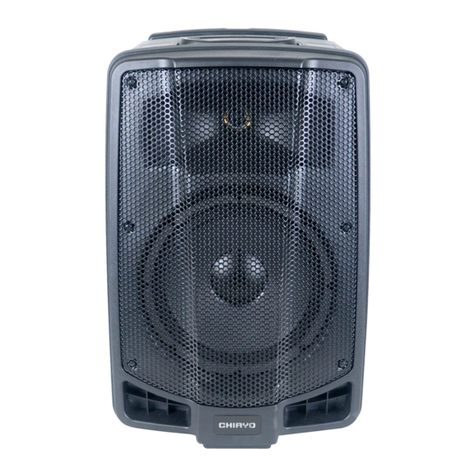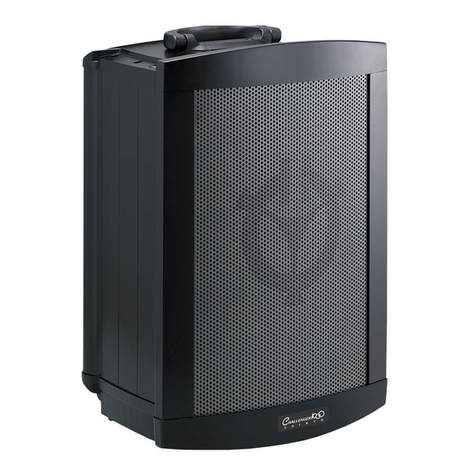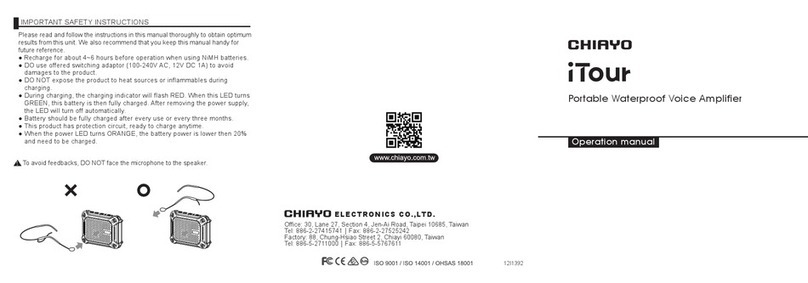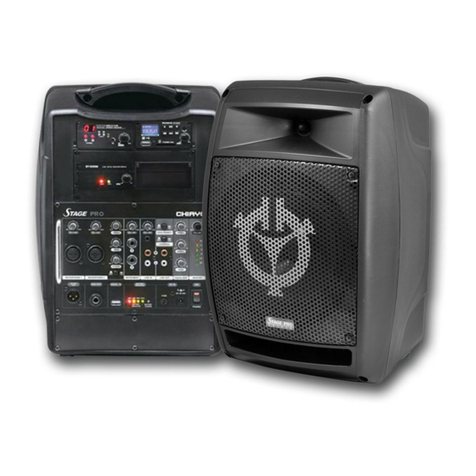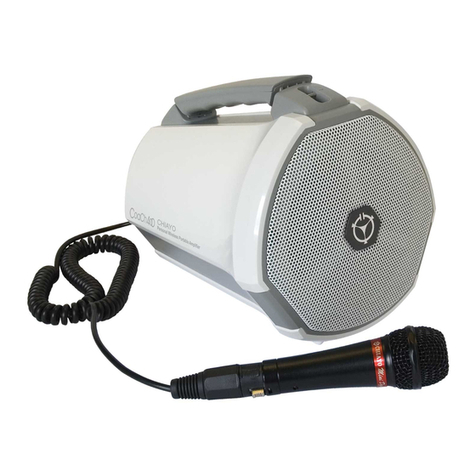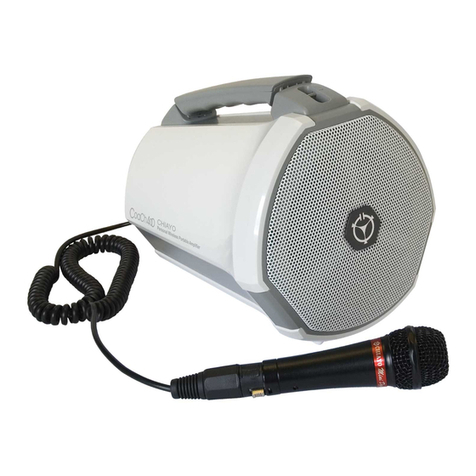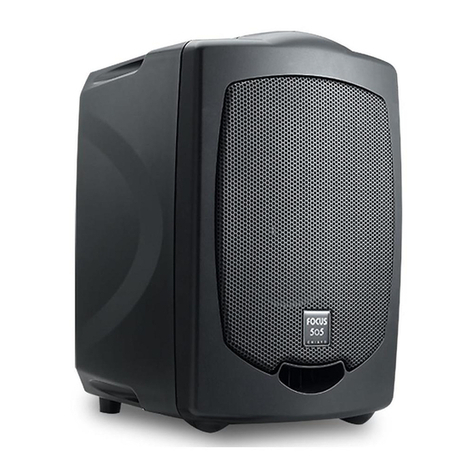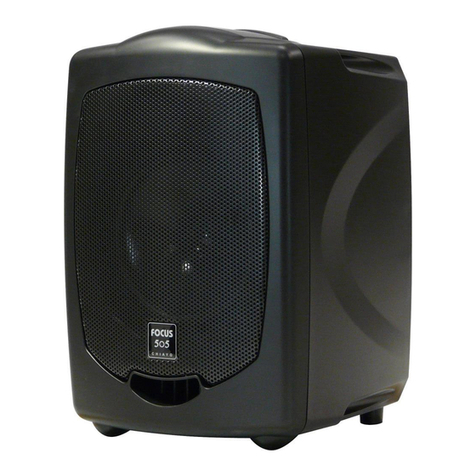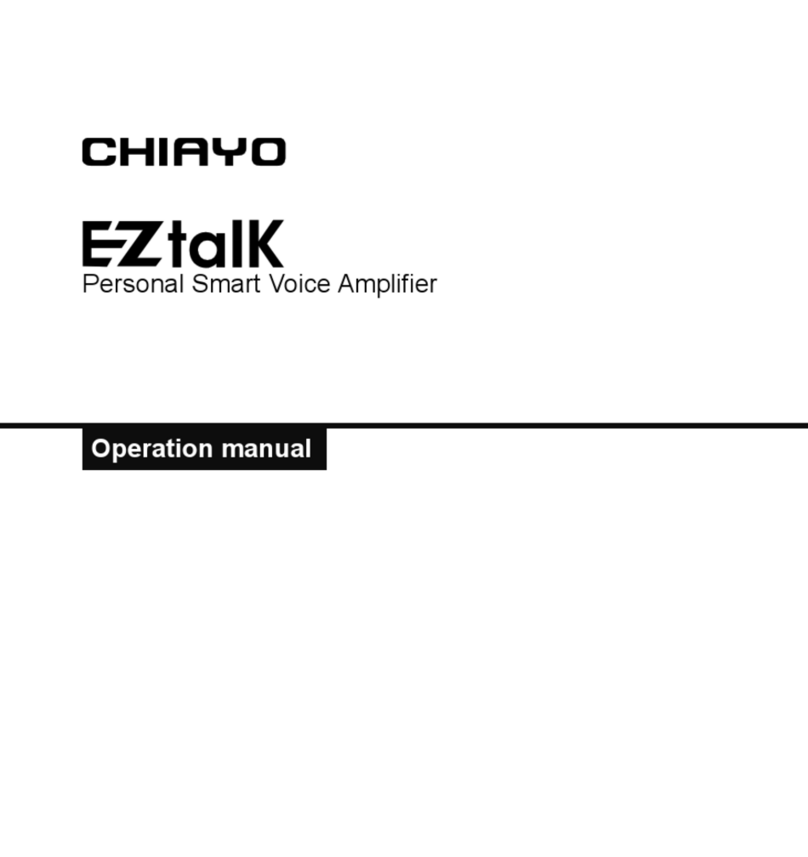-2-
17. USB 2.0 charging port (for 5V device)
18. SUBWOOFER Phase switch
19. SUBWOOFER (crossover) tone control
20. SUBWOOFER output (Ø 6.3mm)
21. SUBWOOFER output (R/L)
22. SPEAKER output (R, Ø 6.3mm)
23. SPEAKER output (R/L)
24. SPEAKER output (L, Ø 6.3mm)
25. ALD (assistive listening device) output (Ø 3.5mm)
26. ALD (assistive listening device) volume control
27. AUX output (RCA R/L)
28. AUX input (Ø 3.5mm)
29. AUX input (RCA R/L)
30. LINE microphone input (Ø 6.3mm)
31. Wired microphone input (balanced, XLR)
32. Antenna B socket (TNC)
As there is only one open slot ○
1 available for module, so only one of the following CHIAYO
modules can be used at any one time:
1.wireless receiver module
2.digital recorder player module
3.Bluetooth receiver module
When a wireless receiver module is plugged in slot ○
1 , two receiving antennas must be
installed at antenna sockets ○
14 and ○
32.for a drop-out-free reception.
MMA-3000 is a 2.1 channel multimedia mixer amplifier, its digital class-D amplifier can drive a
stereo L / R speakers plus a subwoofer!
Operating the WIRED MICROPHONE
1. Connect the wired microphone to the MIC IN jack (XLR ○
31) on the rear panel.
2. Set the LINE / microphone’s volume level ○
3 to minimum before turning on the amplifier.
3. After the unit is ON, adjust the microphone’s volume ○
3 to a desired level.
Connecting to EXTERNAL AUDIO INPUTS
This amplifier’s compatible unbalanced audio inputs include a Ø3.5mm phone jack ○
28 , an
RCA R/L jacks ○
29 and a Ø 6.3mm phone jack ○
30. Their volume controls are ○
6 , ○
7 and ○
3 .
SUBWOOFER OUTPUTS ○
20 ○
21
This amplifier’s compatible subwoofer outputs include a Ø 6.3mm phone jack ○
20 and a phoenix
connector ○
21 . The volume control for subwoofer is ○
12 .


